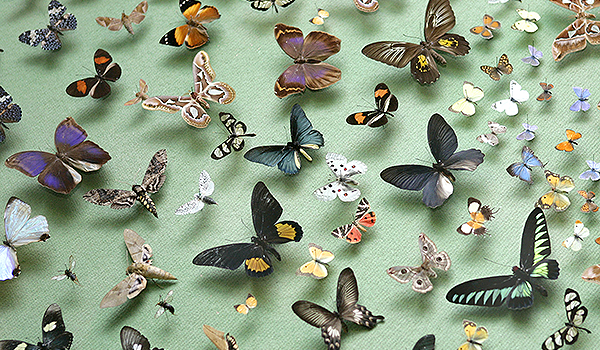Diversity of Life

Wander through several rooms on a journey of discovery, from 18th-century natural history collections to the systematics research of today. Key features of the journey are curiosity, collecting and classification of the earth´s biological diversity.
One of the rooms is a celebration of diversity, with thousands of butterfly species swarming over a wall, and Asian animals displaying their glories. Shown here are habitats such as a coral reef, a rain forest and a Swedish oak tree, all of which are home to a large variety of species. Visitors will discover that insects are masters of diversity.

Among the highlights not to be missed are the extinct quagga, a calf with two heads, exotic birds, a coelacanth, the insect collections and watercolours of Karl-Axel Pehrson, and the Blaschkas´ glass models.
The work of describing and classifying the species of the earth has continued since the days of Linnaeus. Visitors will learn how today´s scientists hunt for, describe and name new species. Thus far, some 1.8 million species have been scientifically described; but there may be as many as 100 million species on earth!

The exhibition includes both extinct and newly discovered species, and addresses such questions as: What is meant by the concept of "species"? How do new species evolve? Why do species become extinct?
Why is biological diversity so important?
A rich biological diversity provides a form of life insurance for the human species. For example, did you know that many tropical plants are useful in the treatment of cancer?
The scientists who today work with biological systematics attempt to classify species on the basis of their relationships with each other; for that, DNA technology is very helpful. The exhibition demonstrates the new technology and how it is applied.



